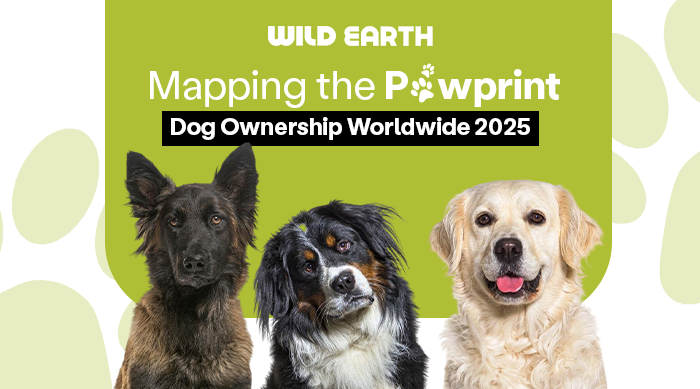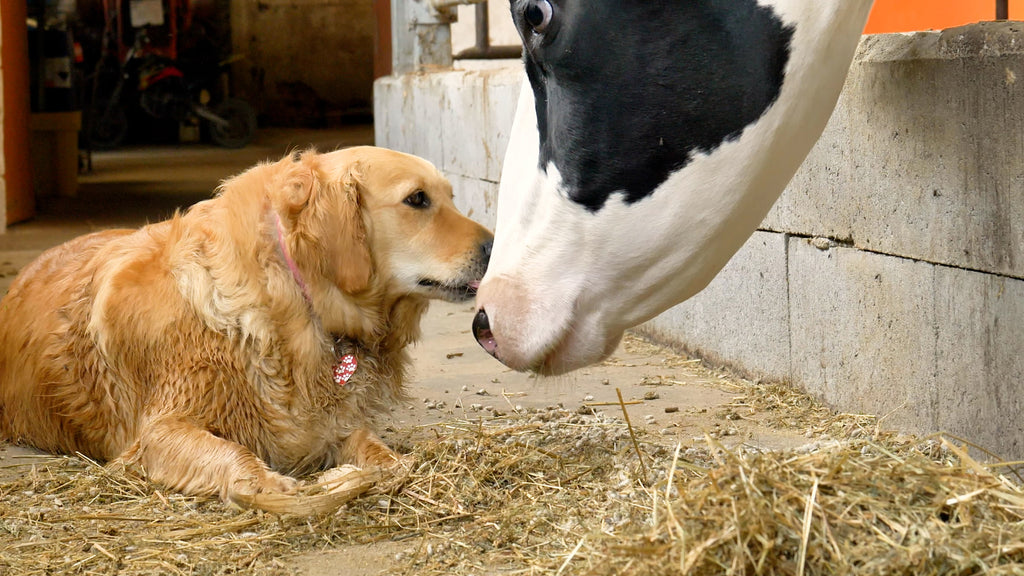
Mapping the Pawprint - Dog Ownership Worldwide in 2025
Summary
- Nearly 900 million dogs worldwide, with about 500 million kept as pets; three in ten households own at least one dog.
- 75–85% of dogs are strays, highlighting sharp contrasts between developed nations (indoor companions) and developing nations (community strays, e.g., 62M in India).
- In the U.S., 97% of owners view dogs as family members—driving “pet humanization.”
- Driven by emotional bonds, organic diets, and high-tech gadgets; animal healthcare market projected at $61B by 2033.
- Across nations and cultures, dogs remain a timeless symbol of love, loyalty, and companionship, deeply shaping human life.
A Global Pack of Companions
Dogs have long been humanity’s most cherished companions, with their numbers continuing to grow. Approximately 500 million dogs live as pets in households worldwide, while the global dog population, including strays, is nearly 900 million. Around three in ten households across the globe consider at least one dog as a family member.
These statistics don’t just represent the evidence of our affection towards our furry friends, they reveal economic trends, public health concerns, and cultural shifts. From the thriving pet industry in the United States to the community dogs in Brazil, the tale of dog ownership in 2025 is that of responsibility, diversity and pure love.

A Global Look at Dog Ownership
Dog ownership in this day and age are a reflection of connection and contrast. Approximately 471 million dogs are kept as pets, while millions more roam the streets as strays. According to recent estimates, some 75 to 85% of the dog population comprises stray dogs. These figures are a stark reminder of the divide between street animals and pets. Another important factor to take into account is the region or the location of where these animals live.
-In developed countries, most dogs are beloved companions and live indoors.
- In developing countries, dogs are often community animals and live as strays. For instance, India has 62 million free-ranging dogs.
This huge contrast tells us that while dogs are everywhere, how and where they live, and our relationship with them is dependent on our economy, culture and state policy.
Inside the Homes of Dog Owners
Taking a closer look at household, some important trends emerge such as :
- 79% of households only have one dog as a pet, which deepens the bond between the owner and their furry companion.
-
63% of dogs are neutered, which is a positive sign when it comes to population control
- 97% of pet owners in the US consider their pup to be one of their family members or children, leading to a phenomenon called “pet humanization”.
Dogs are becoming an integral part of the family, being pampered, celebrated and loved.
Regional Stories: Dogs Around the World
United States: The Powerhouse of Pet Spending
U.S is the world leader when it comes to dog ownership, with 69 million pet dogs.This has fueled the pet industry with $110+ billion expected in pet-related expenditures such as healthcare, food and accessories.
South Korea: Redefining “Pets” as Companions
In South Korea dogs are now considered companion animals capable of providing emotional support. There has been a legal and an emotional shift towards pet ownership. In 2019 75.3% families owned pets.
India: A Tale of Two Realities
India has a complex relationship with dog ownership. Some dogs live a luxurious life and are regarded as forever companions, while 62 million dogs are homeless and roam freely around towns and cities. This highlights issues around dog welfare and humane population control
What are the New Trends Shaping Dog Ownership in 2025?
Generational Shifts: Millennials and Gen Z Lead the Pack
For the first time, younger generations are driving dog ownership. In the U.S., Millennials account for about 30% of pet owners, while Gen Z makes up around 20%, according to the 2025 APPA National Pet Owners Survey. Many are delaying parenthood but happily building “fur families,” celebrating birthdays, holidays, and even curating social media pages for their dogs. In doing so, they’re reshaping the very idea of what family looks like today.
Adoption vs. Breeding: A Global Divide
Adoption is on the rise in regions like the U.S. and Western Europe, thanks to shelter initiatives and strong awareness campaigns. In contrast, many Asian countries still lean toward purchasing purebred dogs, reflecting cultural preferences and differences in adoption infrastructure. These patterns reveal how differently canine companionship is experienced across the globe.
The Digital Pet Economy
From GPS-enabled collars to AI-powered health monitors, technology is becoming an inseparable part of dog ownership. The pet tech industry, projected to reach $105 billion in 2025, is giving owners new ways to protect, track, and bond with their dogs—bringing innovation right into the daily lives of pets and their families.
Pet Insurance and Healthcare
With rising veterinary costs, more owners are turning to pet insurance as part of responsible care. In the U.S., nearly 4.8 million pets were insured in 2022, 22% more than the year before, according to NAPHIA. Europe continues to lead in coverage, showing how deeply pets are woven into financial planning and healthcare decisions.
Urbanization and Lifestyle
In cities like São Paulo, New York, and Tokyo, smaller living spaces are shaping the kinds of dogs people bring home. Compact breeds, dog-friendly apartments, and specialized services like daycares and dog spas are redefining city life. Today, urban dogs aren’t just pets, they’re part of the social fabric, joining their owners in cafes, coworking hubs, and even on daily commutes.
What Is Driving the Growth of the Pet Economy?
The boom in the pet industry is a result of a special bond between a human and their pet. The animal healthcare market is expected to be over $61 billion by 2033. Many pet owners are investing in organic diets and high-tech pet gadgets such as collars with a GPS tracking system.
Why These Numbers Matter
The story of dog ownership in 2025 is rich in layers:
-
Lifestyle & Culture: Generational shifts and the rise of pet parenting.
-
Business & Economy: A booming global pet industry transforming consumer behavior.
-
Public Health & Policy: Stray dog populations, welfare interventions, and vaccination strategies.
-
Technology & Innovation: The rise of the digital pet economy.
-
Cultural Contrast: From pampered U.S. pups to India’s street dogs and South Korea’s “companion animals.”
A Shared Future with Dogs
Humanity’s relationship with dogs shapes the economies, cultures, and households across the globe. With half a billion dogs kept as pets and hundreds of millions roaming the streets. In a developed country you will find a dog in almost every household, whereas, in a developing country you will find a dog in almost every street. The fact of the matter is, no one can deny the special bond between dogs and human beings, it goes back thousands of years and continues to thrive today, carrying a clear message that this right here is a story of love, loyalty and timeless bond.




























